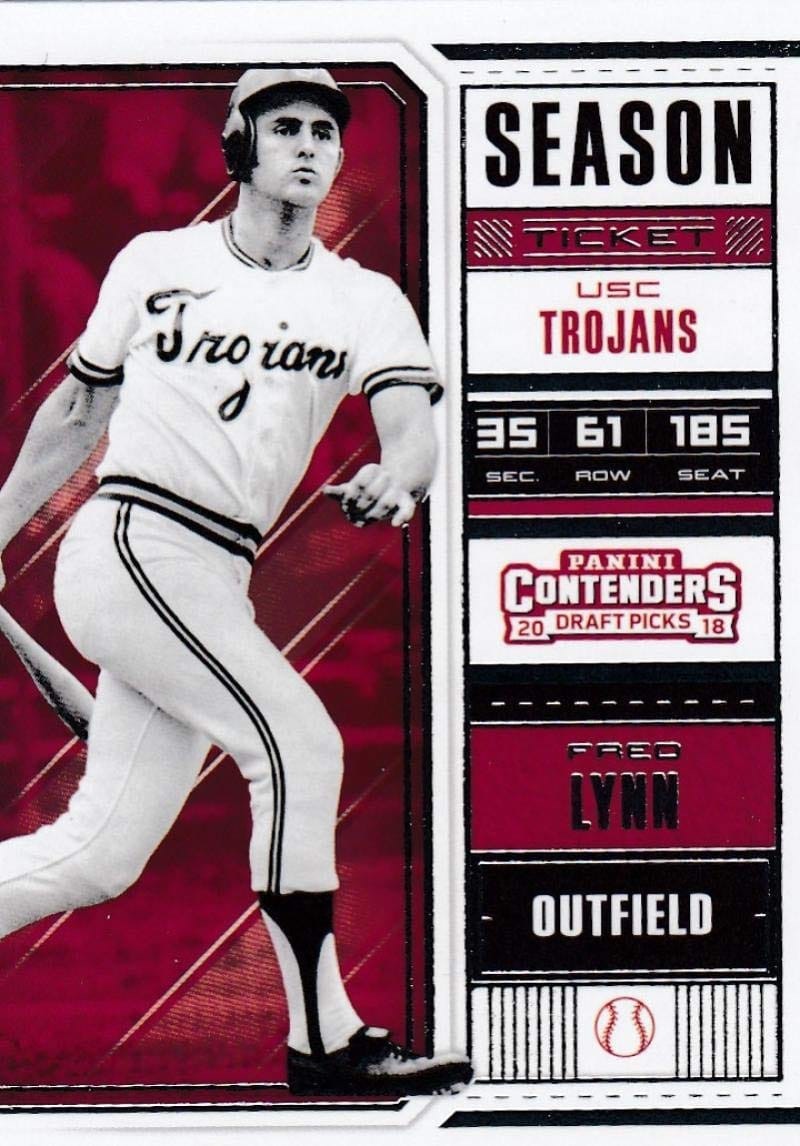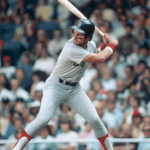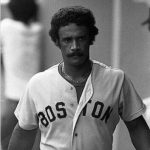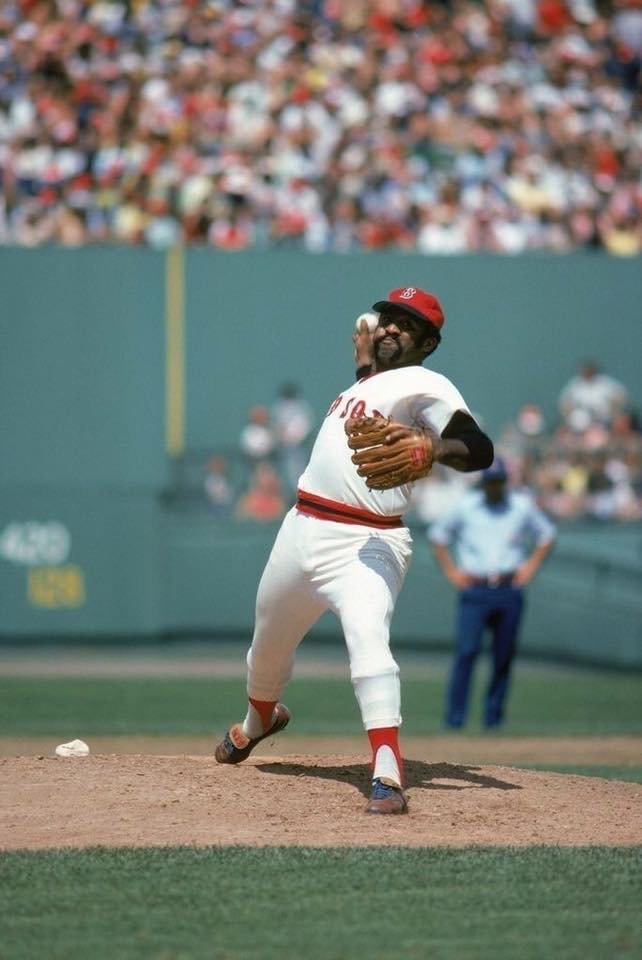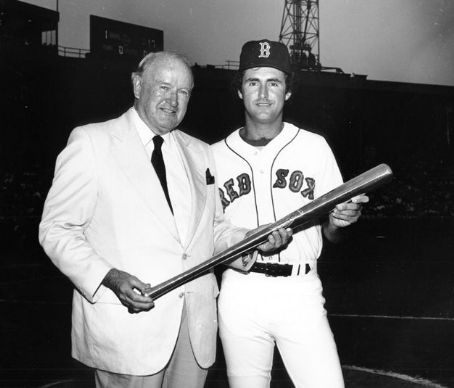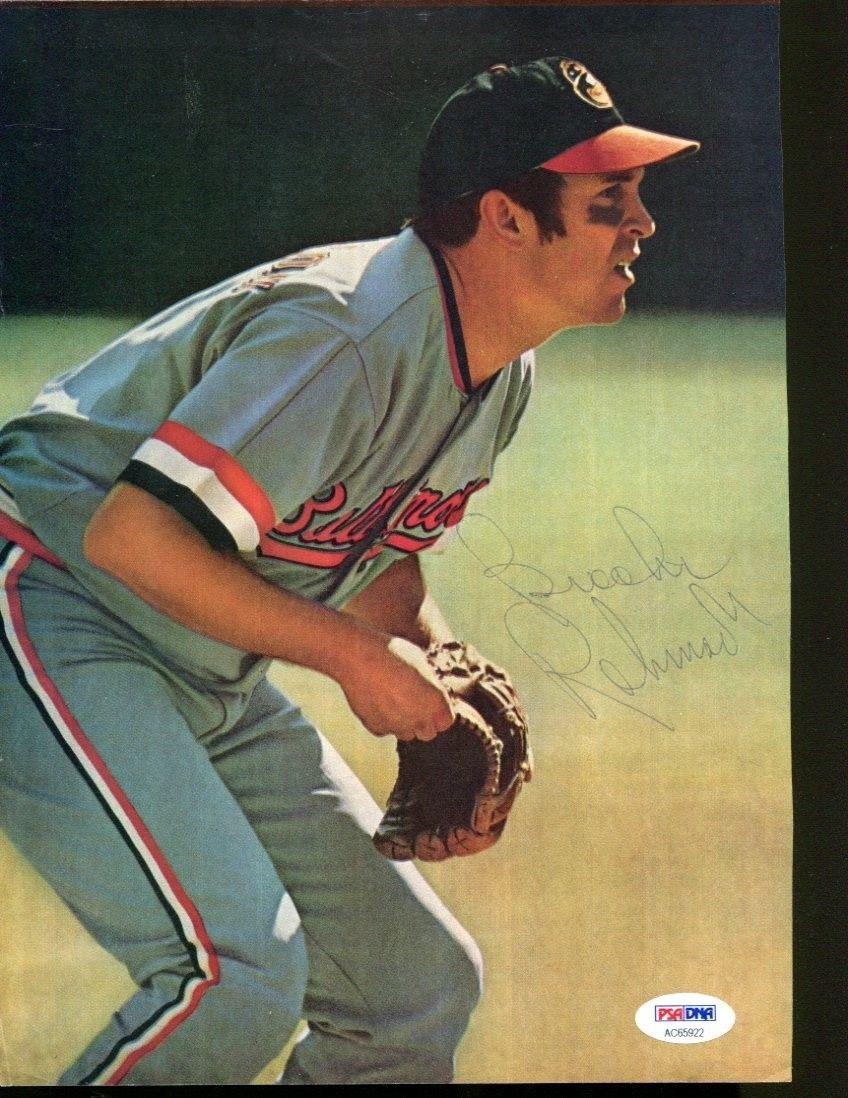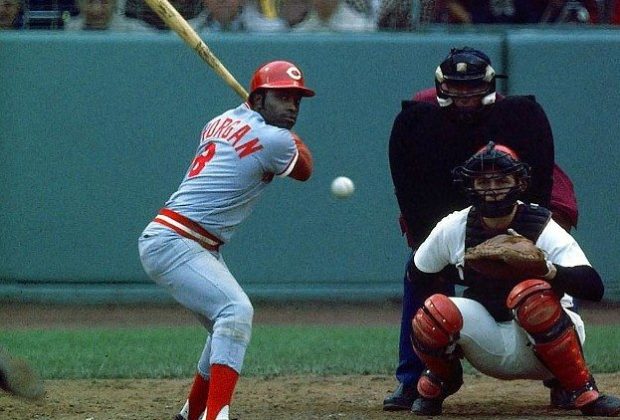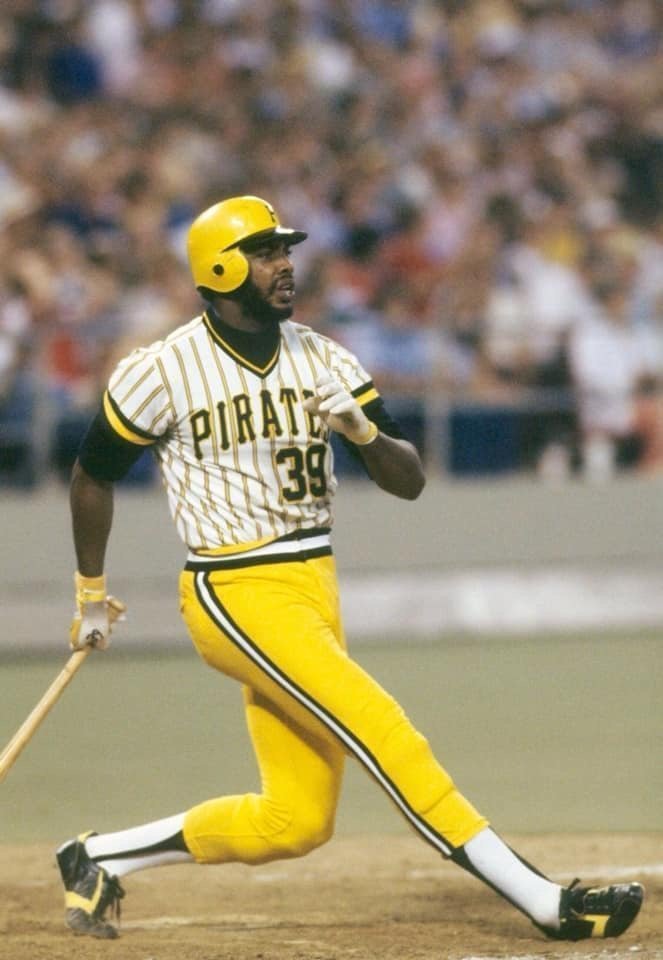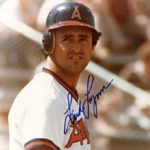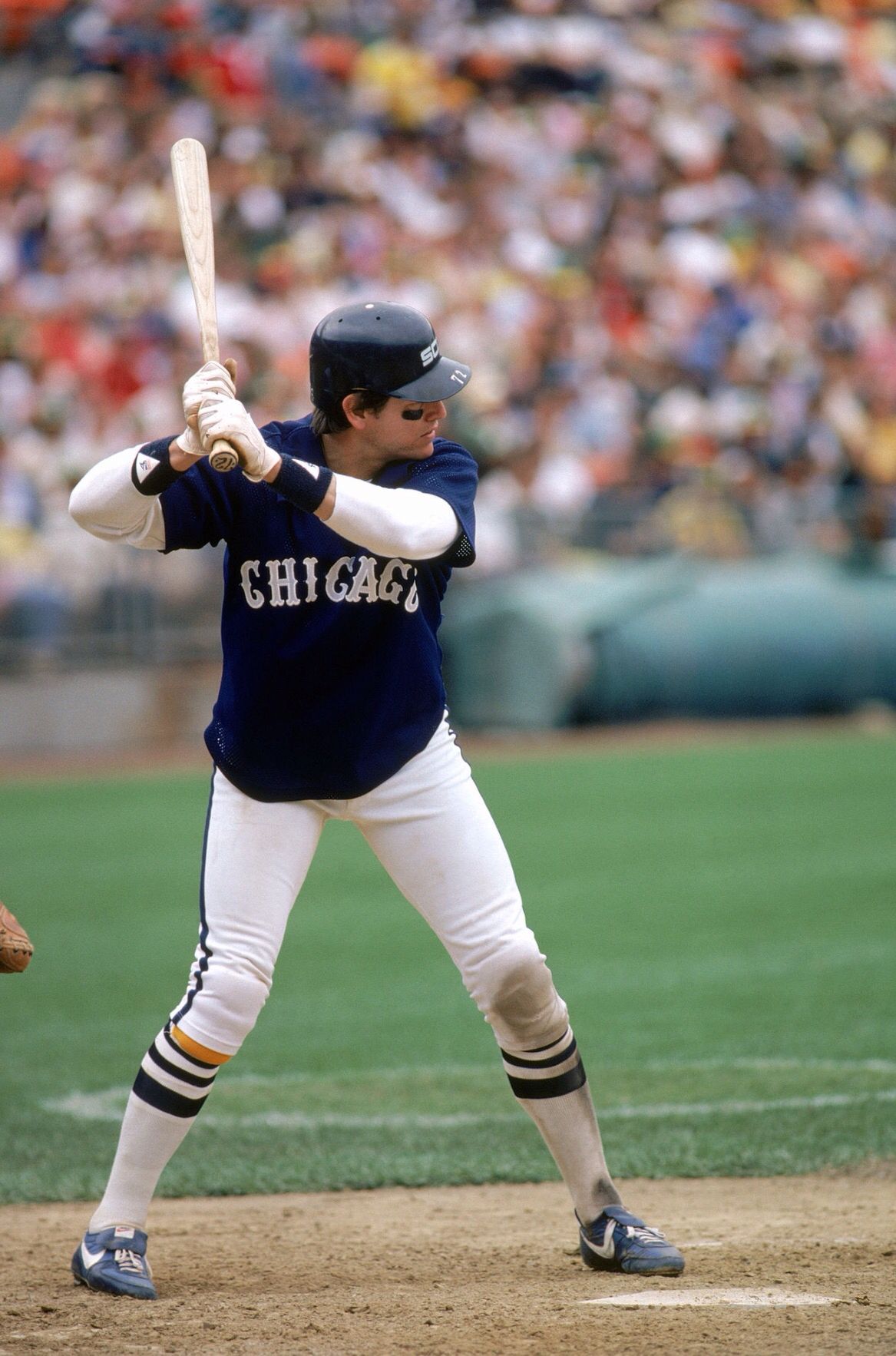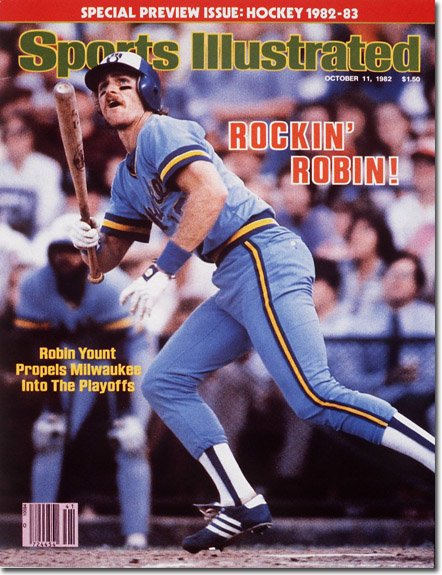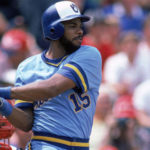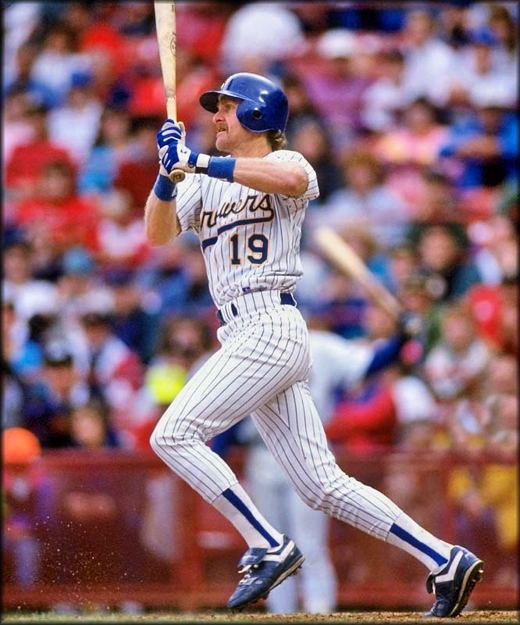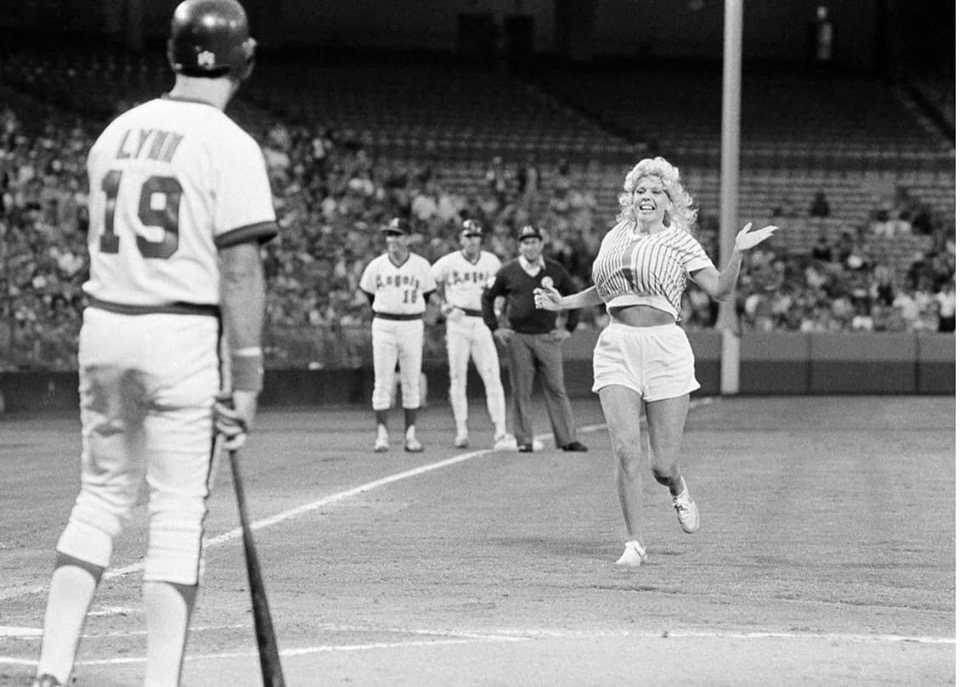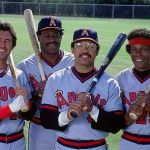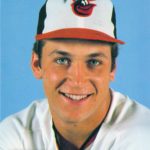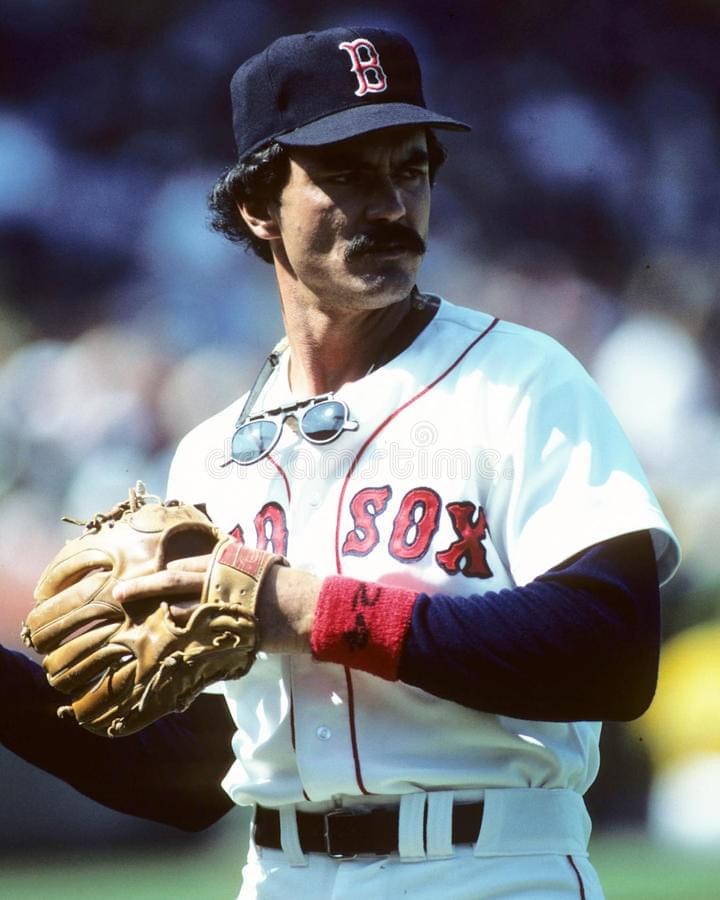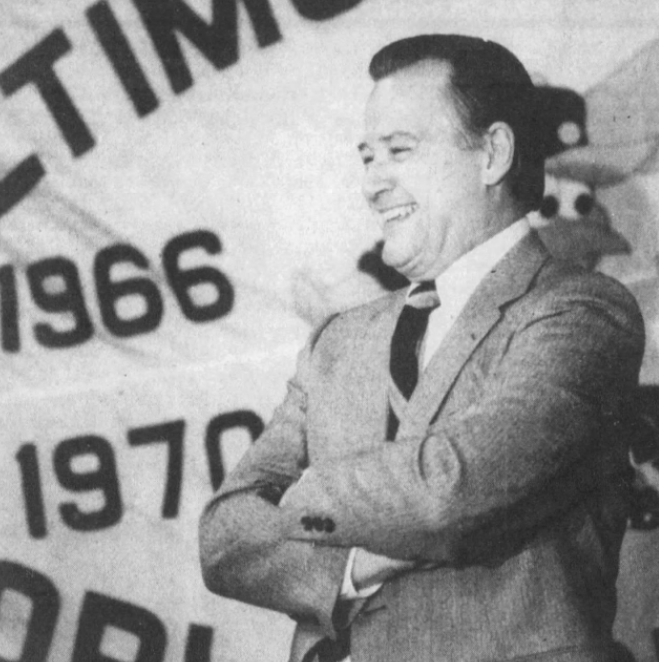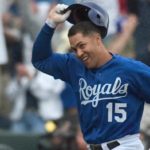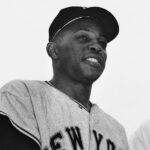Fred Lynn Stats & Facts
Fred Lynn
Position: Centerfielder
Bats: Left • Throws: Left
6-1, 185lb (185cm, 83kg)
Born: February 3, 1952 in Chicago, IL
Draft: Drafted by the New York Yankees in the 3rd round of the 1970 MLB June Amateur Draft from El Monte HS (El Monte, CA) and the Boston Red Sox in the 2nd round of the 1973 MLB June Amateur Draft from University of Southern California (Los Angeles, CA).
High School: El Monte HS (El Monte, CA)
School: University of Southern California (Los Angeles, CA)
Debut: September 5, 1974 (11,155th in MLB history)
vs. MIL 1 AB, 0 H, 0 HR, 0 RBI, 0 SB
Last Game: October 3, 1990
vs. LAD 1 AB, 0 H, 0 HR, 0 RBI, 0 SB
Fred Lynn Baseball Reference Page
Full Name: Fredric Michael Lynn
View Player Bio from the SABR BioProject
Nine Players Who Debuted in 1974
Robin Yount
Gary Carter
Jim Rice
Keith Hernandez
Fred Lynn
Jim Sundberg
Kent Tekulve
Dennis Leonard
John Montefusco
Notable Events and Chronology for Fred Lynn Career
He arrived on the big league scene like a bolt of lightning through the evening sky. Fred Lynn played in his first game on September 5, 1974 and proceeded to smash major league pitching to the tune of a .419 batting average and a .698 slugging average over his first 15 games. He followed that up with one of the greatest rookie seasons of all time, leading the Red Sox to the World Series and earning the Rookie of the Year, Most Valuable Player, and Gold Glove awards for the 1975 season. Lynn was the first player to achieve this trifecta, an accomplishment matched by Ichiro Suzuki of the Seattle Mariners in 2001.
Fredric Michael Lynn was born on February 3, 1952, in Chicago, Illinois, to Fred and Marie Lynn. At age one his family moved to Southern California. He was an only child, and after his parents’ divorce in 1965 he lived with his father, a textile service executive. Lynn grew up in the Lutheran Church and remains a Lutheran to this day. He has a United Nations heritage: English, French, Spanish, Native American, Norwegian, German, and Bohemian.
As a youngster, he loved sports and enjoyed playing football, basketball, baseball, marbles, and track. Despite being raised in the Los Angeles suburbs, Lynn was a Giants fan and not a Dodgers fan. He did not like the great pitching/weak hitting Dodgers, but the big bats of Giants sluggers Willie Mays and Willie McCovey. His favorite players as a child were Mays and Roberto Clemente. He respected them as all-around players, with hitting ability, power, speed, defensive excellence, and a strong throwing arm.
He won batting titles in Little League, Pony League, and at El Monte High School. In high school, he lettered in baseball, football and basketball. While at El Monte, he became acquainted with Diane May Minkle, known as Dee Dee, a fellow student and a cheerleader. The two were married in February, 1974. The couple had two children, Jason Andrew born on March 16, 1978, and Jennifer Andrea on October 6, 1979. Fred and Dee Dee later divorced.
During his high school years, Lynn both pitched and played centerfield. In one game during his sophomore year, he pitched 13 innings. He could throw hard and also had good breaking stuff, but was a raw pitcher. No one worked with him on technique. As a junior he was 11-1 with a 1.01 ERA with many strikeouts. As a senior, he went 6-5 with a sub-1.00 ERA. In football, he kicked and returned punts and kickoffs.
Lynn wanted to be the first person in his family to attend college. The family told teams not to draft him, but that it would take a lot of money to prevent him from attending college. He was drafted by the New York Yankees in the third round of the 1970 baseball draft. He decided not to sign, and entered the University of Southern California on a football scholarship. As a freshman, he played with the varsity in both football and baseball. John McKay coached the USC football team and Rod Dedeaux was the baseball coach. Lynn was a teammate of future Pittsburgh Steelers star Lynn Swann. On the gridiron, he played wide receiver and defensive back, as well as kicker, punter, and returner of punts and kickoffs. Lynn says he played both offense and defense, and never came off the field. Although he enjoyed success as a football player, during his sophomore year, Lynn switched his scholarship over to baseball. Is it true that he never came off the field? This was a fantastic USC team, so if he really played nearly every play this would have been a huge national story. I never heard of him as a football player.
Lynn had met Dedeaux for the first time the summer after he graduated from high school. He played on an all-star baseball team of mostly high school seniors that played the USC varsity. Lynn faced future major leaguer Dave Kingman, a 6’6″ pitcher at the time. Kingman was the hardest thrower he had ever faced up to that point, but Lynn walked on four pitches. After the game, Dedeaux approached Lynn. “I liked the way you hung in there.” Dedeaux called all his players “Tiger”. He gave players confidence. He was a good role model since Lynn was a shy youngster.
Lynn played for the USC varsity as a freshman, sophomore and junior and the team enjoyed three years of amazing success, going 54-13 in 1971, 50-13 in 1972 and 51-13 in 1973, winning the NCAA Baseball Championship each season. Lynn was an All-American in 1972 and 1973. He was named MVP for the US All-Stars during a series in Japan. During his college career, he was a teammate of future major league players Steve Busby, Steve Kemp and Roy Smalley Jr. He was a member of the 1971 Pan Am Team.
At first, Lynn majored in Business Administration, but he became bogged down as a junior and switched into Physical Education. If he couldn’t be a baseball player, he wanted to teach. He also enjoyed history.
Lynn thought the Dodgers would take him with their first pick in the 1973 amateur draft, but the Dodgers drafted Ted Farr, a catcher out of Spokane, Washington. They were hoping Lynn would still be available in the second round. The Red Sox picked one slot ahead of the Dodgers that year and drafted him in the second round (28th pick overall — the Red Sox took Ted Cox with their first pick). Lynn signed with the Red Sox on July 9, 1973 by scout Joe Stephenson for $40,000. He was assigned to the Red Sox Double-A affiliate in Bristol, Connecticut where he played under manager Rac Slider. It was the first time he played on the East Coast. He started off strong, but tired as the summer wore on and ending up hitting .259 in 53 games as the team finished third in the American Division with a 62-77 record. It was at Bristol that he became a teammate and friend of Jim Rice. Lynn and Rice would remain teammates with the Red Sox organization through 1980.
They were both promoted to Pawtucket, Rhode Island for the Triple-A playoffs and helped the team win the Governors Cup, defeating Tidewater three games to two and then Charleston, again three games to two, for the championship. In 1974, Lynn started with Pawtucket and made the All-Star team, hitting .282 with 21 home runs and 19 doubles in 124 games. He finished tenth in the International League in batting average. Despite having Lynn and Triple Crown winner Jim Rice, the PawSox finished last, going 57-87, under future Red Sox skipper Joe Morgan.
Meanwhile in Boston, the Red Sox hired Darrell Johnson as manager and held first place for 98 days. In September, though, they struggled to a 12-19 record, while the Baltimore Orioles and New York Yankees passed them in the standings, going 25-6 and 20-11, respectively. What really killed the Red Sox that season was a stretch beginning on August 24, when they lost to the Athletics and proceeded to win eight games and lose 20 through September 22. The Red Sox ended up winning 84 games, third in the American League East. Rice was recalled in late August, and Lynn was called up after the Triple-A season was over.
Although the season ended up in disappointment, the future seemed bright with a core of talented young players such as Jim Rice, Carlton Fisk, Rick Burleson, Cecil Cooper, Dwight Evans, Juan Beniquez, Rick Miller, and Fred Lynn.
The pain of the collapse of the 1974 team was erased by the joy of 1975, with the team being led by its two fine rookies. Lynn and Rice were known as the Gold Dust Twins. Rice had a fine rookie season, hitting .309 with 22 home runs and 102 RBIs, but Lynn was even better, hitting .331 with 47 doubles, 21 home runs, 103 runs, and 105 RBIs. He earned honors as American League MVP and Rookie of the Year and won a Gold Glove for fielding excellence. He led the league in runs, doubles, slugging average, OPS and runs created per 27 outs. He finished second in runs created and in batting average and fifth in on-base average.
It was not only his batting feats that drew attention, but also his wonderful fielding. Lynn was terrific diving forward, snaring line drives, and jumping to reach over fences and take home runs away from hitters. During his career, Lynn earned Gold Gloves four times.
In an interview with Jon Goode at Boston.com in 2004, Lynn reflected: “I am most proud of the Gold Gloves and really cherished those. I prided myself on defense. When I played basketball and football I always wanted to guard the toughest guy. When I played centerfield, I felt like I was guarding somebody and I didn’t want any ball to fall in my area. I took it personally when balls would fall in and I didn’t catch them.”
Smooth and graceful, Lynn batted and threw left-handed. As a major leaguer, Lynn stood 6’1″ and weighed 185 pounds. He was modest about his accomplishments. In the 1976 Complete Handbook of Baseball, Lynn said: “One man doesn’t make a team. All the awards are great, but they are secondary to winning. If we didn’t win, none of these awards would mean anything.”
During his magical season, Lynn staged a one-man assault on Tiger Stadium, on June 18, belting out three home runs (just missing a fourth), a triple and a single, driving in 10 runs in a 15-1 thrashing of the Tigers.
The Red Sox clinched the American League East on September 28. They faced the defending three-time champion Oakland Athletics in the American League Championship and swept the series in three games. Lynn hit .364 in the series.
In the World Series, the Red Sox took on the Cincinnati Reds, winners of 108 games that season. Most baseball experts predicted the Reds would win easily, but the Red Sox battled hard and took the Reds to a seventh game. Many baseball fans consider that Series the greatest ever played. Five games were decided by a single run, two games went into extra innings, two games were decided in the ninth inning and in six of the seven games the winning team came from behind. The sixth game was perhaps the best World Series game ever played. Fred Lynn was the on-deck hitter when Carlton Fisk blasted his classic game-ending home run off Pat Darcy leading off the bottom of the 12th.
During that game, Lynn smashed a three-run homer in the first inning to give the Red Sox the lead. During a Reds rally in the top of the fifth inning, Lynn crashed into Fenway Park’s then-unpadded wall in left center chasing a triple hit by Ken Griffey Sr. Fenway became silent, but Lynn remained in the game after receiving attention from Red Sox trainer Charlie Moss. In the World Series, Lynn played in all seven games, batting .280 with a double and home run, and five runs batted in, tying for most on the team. After the season, the Red Sox padded their outfield walls.
Expectations were high for the Red Sox in 1976, but the season was a disappointment. The league champions had added future Hall of Famer Ferguson Jenkins to the roster, but won just 83 games, finishing third in the American League East. Long-time owner Tom Yawkey lost a lengthy battle with cancer on July 9. A 10-game losing streak from April 29 through May 11, a poor season by starting pitcher Bill Lee, and a prolonged holdout by Lynn, Burleson, and Fisk all contributed to a lost season.
Red Sox manager Darrell Johnson was fired during the season and replaced with third base coach Don Zimmer. Lynn made the All-Star team, won another Gold Glove and hit .314 with 32 doubles in 132 games, but the season was not fun for him. In the April 2, 1977 edition of The Sporting News, Lynn told Larry Whiteside of the Boston Globe, “For the first time in my life, baseball isn’t fun. It was always easy to play a game. This is hard.”
After Yawkey’s death, the team was managed by a trust made up of his widow Jean Yawkey, James Curran, and Joseph LaCour. In August, Lynn, Burleson, and Fisk each agreed to five-year contracts. Owners and players signed a new Basic Agreement at the same time. Free agency for players was now possible. Later on, the team would fall into the hands of Mrs. Yawkey, former player personnel director Haywood Sullivan, and former Red Sox and Boston Celtics trainer Buddy Leroux. This union would not be a happy one. In 1983, an acrimonious lawsuit took place. Sullivan and Yawkey wanted to run the Red Sox as Tom Yawkey had and Buddy Leroux always had his eye on the bottom line. By 1981, Lynn, Burleson, and Fisk would no longer be Red Sox. Eventually, Leroux sold his interest in the Red Sox and Sullivan ran the team for Mrs. Yawkey. One wonders whether Tom Yawkey would have found a way to keep the three.
Lynn looked forward to the new season. “Last year is history and I’m not going to dwell on the past,” he said. “I didn’t sit back after 1975 and think about the past. I’m not going to sit back and do it with the 1976 season. It’s history. People are going to say we’re in it just for the money and nothing else. But that’s not true. I really like the game. It’s more than a job to me. It’s a part of me and has been all my life. I’m happy that I came along when I did and am well paid. But with me, it’s a matter of pride, not money. I enjoy the game.”
He began that season on the disabled list, from March 24 through May 6, with torn ligaments in his left ankle. He ended up hitting .260 with 18 home runs and 76 runs batted in over 129 games. He made the All-Star team for the third time. The Red Sox swatted 213 home runs and improved to 97 wins and 64 losses, tied for second with the Orioles in the American League East.
In 1978, Lynn’s ankle returned to health and he had a fine season. He played in 150 games, the most in his career, hitting .298 with 22 home runs, and 82 runs batted in. He made the All-Star team for the fourth time and won his second Gold Glove. The Red Sox had a memorable season, jumping out to a big lead, slumping in September, bouncing back to win 99 games and tie the Yankees for the American League East Championship. The Yankees edged the Red Sox 5-4 in a one-game playoff in Fenway Park. Lynn singled and drove in a run.
Lynn spent the offseason strengthening himself on Nautilus machines. In 1979, he enjoyed perhaps his best season. He led the American League in hitting at .333, on-base average at .423 and slugging at .637. He also slugged a career-high 39 home runs, scored a career-high 116 runs, and had a career-high 122 runs batted in. He was named to the American League All-Star team for the fifth time and earned his third Gold Glove. He finished fourth in American League MVP voting. Those interested in statistical analysis will note that in the 1980 Bill James Baseball Abstract, Lynn had the highest value approximation method rating in the major leagues, earning 17 points. Under James’s more recent Win Shares method, Lynn also led the majors with 34.
1980 would be Lynn’s last year with the Red Sox. In his farewell season, he hit .301 with a .383 on-base average and .480 slugging average. On May 13, he hit for the cycle against the Minnesota Twins. His season ended on August 28. He was batting against Oakland A’s starter Steve McCatty when he fouled a ball off his foot, fracturing his right toe. He was named an All-Star for the sixth time and won his fourth and last Gold Glove.
Lynn was very successful hitting in Fenway Park. Over his entire career, he hit .347 with a .420 on-base average and a .601 slugging average in 440 games and 1,581 at-bats.
The Red Sox were not willing to pay Fred Lynn what he felt he was worth, so on January 23, 1981, Lynn and Steve Renko were both sent to Lynn’s hometown California Angels for Joe Rudi, Frank Tanana, and Jim Dorsey. Lynn enjoyed playing for the Red Sox and loved hitting in Fenway Park. In talking about Red Sox fans, he later said, “They supported you all the time. They were always there and let you know what they were feeling in the good side and the bad side, which was OK. As a player it keeps you on your toes. You don’t ever come to Fenway with a complacent attitude. You come there to play otherwise they will let you know you are not living up to their expectations and I liked that.”
A baseball strike wiped out the middle portion of the 1981 season. Lynn had to adjust to a new ballpark and struggled with a .219 batting average in 256 at-bats. This would be the lowest average in his career. He would, however, be named to the American League All-Star team for the seventh consecutive time.
1982 was a much better year for both Lynn and the Angels. With a veteran roster of All-Stars such as Rod Carew, Bobby Grich, Reggie Jackson and Don Baylor, the Angels won the American League West Division, winning 93 games. Lynn had a fine season, hitting .299 with a .374 on-base average and a .517 slugging average. He was an American League All-Star for the eighth consecutive time.
In the American League Championship Series, the Angels took on the Milwaukee Brewers in a best-of-five series. The Angels took the first two games, but the Brewers stormed back to take the next three games. It wasn’t due to any lack of productivity by Fred Lynn. He was the hottest hitter in the series for either team, hitting .611, with 11 hits in 18 at-bats, two doubles, a homer, and five runs batted in.
In 1983, Lynn was named to the American League All-Star team for the ninth consecutive time. 1983 marked the 50th Anniversary of the All-Star Game, and as it had been in 1933, it was held in Comiskey Park in Chicago. Lynn enjoyed a memorable game. In the third inning with Manny Trillo on third base, Rod Carew on second and Robin Yount on first, Lynn stood in the batter’s box against San Francisco Giants left-handed pitcher Atlee Hammaker. Lynn worked the count to 2-2, then drove a hanging slider into the right-field seats, the first grand slam in the history of the All-Star Game. The American League won the game 13-3, its first win since 1971. Lynn was named the game’s Most Valuable Player.
During the regular season, Lynn hit .272 with 22 home runs and 74 runs batted in, a .352 on-base average and a .483 slugging average.
The next year, 1984, would be Lynn’s last season with the Angels. Playing in 142 games, the most of his Angels career, Lynn hit .271, with 23 home runs, 79 runs batted in, a .366 on-base average and a .474 slugging average.
On November 8, 1984, Lynn was granted free agency, and signed with the Baltimore Orioles on December 11. He would play with the Orioles from 1985 to 1988. He hit 23 home runs in each season, from 1984 through 1987. He was a useful player, batting as high as .287 in 1986 with a .371 on-base average and a .499 slugging average. Injuries caused him to miss many games. The most games he played in a season for the Orioles was 124 in 1985
In October 1986, Lynn married for the second time, this time to Natalie. The couple became acquainted while she was producing TV commercials in New Bedford, Massachusetts and he was doing a Ford TV commercial at the same time
On August 31, 1988, the Orioles traded Lynn to the Detroit Tigers for Chris Hoiles, Cesar Mejia and Robinson Garces. The Tigers were involved in a ferocious battle for the American League East crown, along with the Red Sox, Brewers, Blue Jays and Yankees. Lynn contributed seven home runs in 90 at-bats in 27 games for the Tigers, who ended up in second place, just one game behind the Red Sox.
In 1989, the bottom fell out for the Tigers as they dropped down to last place in the American League East, winning 59 games and losing 103. Lynn’s batting average dropped to .241 with 11 home runs in 353 at-bats. The end of his fine career was drawing near.
Lynn was granted free agency on November 13, 1989 and he signed with the San Diego Padres on December 6. He would be returning to Southern California, this time playing for the first time in the National League. Lynn got into 90 games for the Padres in 1990, making him a three-decade player. Lynn batted .240 and hit six homers for the Padres. He played his final major league game on October 3.
How good was Fred Lynn? At his best, he was a good as anyone, but injuries slowed his career down. There are seven skills in baseball: controlling the strike zone, hitting for power, hitting for average, offensive speed, fielding range, fielding reliability and throwing ability. When healthy and at his best, Lynn did all these things well.
Lynn rates Fenway Park as his favorite baseball park to play in. Frank Tanana (before he hurt his arm) was the toughest pitcher for him to hit against. His favorite pitchers to hit against were Bert Blyleven and Lerrin LaGrow.
During his post-baseball career, Lynn broadcast as a baseball analyst for ESPN in 1992-1995 and 1999-2000, for CBS TV in 1997-98 and Fox TV in 1998. He was a consultant for Trinity Products/MLB Product Line 2002-2004. He also makes appearances at autograph shows. Lynn has been involved with Child Haven, a charity for disadvantaged children. He has donated some memorabilia to help raise funds for the organization. In 1994, Fred Lynn was inducted into the USC Hall of Fame. On November 14, 2002, he was inducted into the Red Sox Hall of Fame.
His hobbies are fishing, golf and tennis. His favorite food is cheeseburgers. He and his wife Natalie reside in Carlsbad, California.
In summing up his career, Lynn told authors Harvey and Frederic J. Frommer in Growing Up Baseball, “I wouldn’t trade the time that I played for all the dollars you could make now. The country was just coming out of the Sixties. Everybody was having a pretty good time. There was not the media as we know it now. And a guy like me who was pretty introverted could just hide, play baseball, play with reckless abandon.”
<strong>Note</strong>
A version of this biography was originally published in <em>’75: The Red Sox Team That Saved Baseball</em>, edited by Bill Nowlin and Cecilia Tan, and published by Rounder Books in 2005.
Factoids, Quotes, Milestones and Odd Facts
Played For
Boston Red Sox (1974-1980)
California Angels (1981-1984)
Baltimore Orioles (1985-1988)
Detroit Tigers (1988-1989)
San Diego Padres (1990)
Similar: Ken Griffey Jr.
Linked: Jim Rice, Carlton Fisk
Best Season, 1979
Lynn hit a career-high 39 homers to go with 122 RBI, 116 runs scored, 42 doubles, 82 walks, a .333 average, .423 on-base percentage, and a .637 slugging percentage. The last three marks all led the American League, but Fred finished a disapointing fourth in MVP voting, behind Don Baylor and Ken Singleton, who played for first place teams, and George Brett.
Awards and Honors
1975 AL Gold Glove
1975 AL MVP
1975 AL Rookie of the Year
1978 AL Gold Glove
1979 AL Gold Glove
1980 AL Gold Glove
1982 AL ALCS MVP
1983 ML AS MVP
Post-Season Appearances
1975 American League Championship Series
1975 World Series
1982 American League Championship Series
Description
Throughout the course of his career, especially early on, Lynn was one of the most exciting players to watch on the diamond. When he was roaming center field for the Red Sox, Lynn galloped with his long strides and leaped to make amazing catches. He crashed into walls, collided with teammates, and made fantastic throws
Factoid
After he collected 11 hits in five games and batted .611 in the 1982 Playoffs, Fred Lynn became the first player on a losing team to be named Most Valuable Player in a League Championship Series.
Milestones
Lynn hit his 300th home run against Bret Saberhagen of the Royals, on September 4, 1989, at Detroit’s Tiger Stadium… In dramatic fashion, Lynn belted his 200th home run on May 10, 1985, at Memorial Stadium in Baltimore. With the Orioles and Twins tied 5-5 in the bottom of the ninth, Lynn made the O’s winners when he slugged a walk-off homer off Minnesota reliever Ron Davis… On August 5, 1979, in the first game of a doubleheader against the Brewers in Milwaukee, Lynn hit his 100th career home run, off Lary Sorensen. Lynn also hit a homer in the second game of the twinbill.
Injuries and Explanation for Missed Playing Time
1976: Missed first six weeks of the season with a severe sprained ankle.
Hitting Streaks
20 games (1975)
20 games (1979)
20 games (1975)
20 games (1979)
17 games (1976)
17 games (1976)
Transactions
June 4, 1970: Drafted by the New York Yankees in the 3rd round of the 1970 amateur draft, but did not sign; June 5, 1973: Drafted by the Boston Red Sox in the 2nd round of the 1973 amateur draft; January 23, 1981: Traded by the Boston Red Sox with Steve Renko to the California Angels for Frank Tanana, Jim Dorsey, and Joe Rudi; November 8, 1984: Granted Free Agency; December 11, 1984: Signed as a Free Agent with the Baltimore Orioles; August 31, 1988: Traded by the Baltimore Orioles to the Detroit Tigers for players to be named later and Chris Hoiles. The Detroit Tigers sent Cesar Mejia (minors) (September 9, 1988) and Robinson Garces (minors) (September 9, 1988) to the Baltimore Orioles to complete the trade; November 13, 1989: Granted Free Agency; December 6, 1989: Signed as a Free Agent with the San Diego Padres; November 5, 1990: Granted Free Agency.
Factoid
On May 13, 1976, after missing the first six weeks of the season with an ankle injury suffered in spring training, Fred Lynn hit the first pitch he saw from Seattle’ Dick Pole for a home run. In his next at-bat, Lynn homered again.
Quotes About Lynn
“[Fred] Lynn is the most complete player in our league. But when you think of the most dangerous hitter, you think of a [Jim] Rice or [Don] Baylor, a guy who scares you every time he comes to the plate.” — Toronto manager Roy Hartsfield, 1979
All-Star Selections
1975 AL
1976 AL
1977 AL
1978 AL
1979 AL
1980 AL
1981 AL
1982 AL
1983 AL
Replaced
The Sox had Rick Miller and Juan Beniquez sharing time in center field in 1974. Prior to that, Reggie Smith had been the last full-time center fielder for Boston.
Replaced By
After dealing Lynn to the Angels prior to the 1981 season, the Sox turned to…Rick Miller to fill that hole in center field. Within a couple of years, Tony Armas was out there. Lynn’s last regular, fulltime job was with the Orioles, where he played center field. After the O’s dealt him to the Tigers late in 1988, they gave young Brady Anderson a shot.
Best Strength as a Player
He could hit right-handed pitchers (.298 with a .510 SLG average), and he hit amazingly well in Fenway (.347 with a .601 SLG mark and .420 OBP in 440 games)… Lynn was a fine defensive center fielder. In a 1979 poll of American League managers, Lynn was selected as the best outfielder in the league.
Largest Weakness as a Player
Knowing when to ramp it back a little bit and stay healthy.
Other Resources & Links


